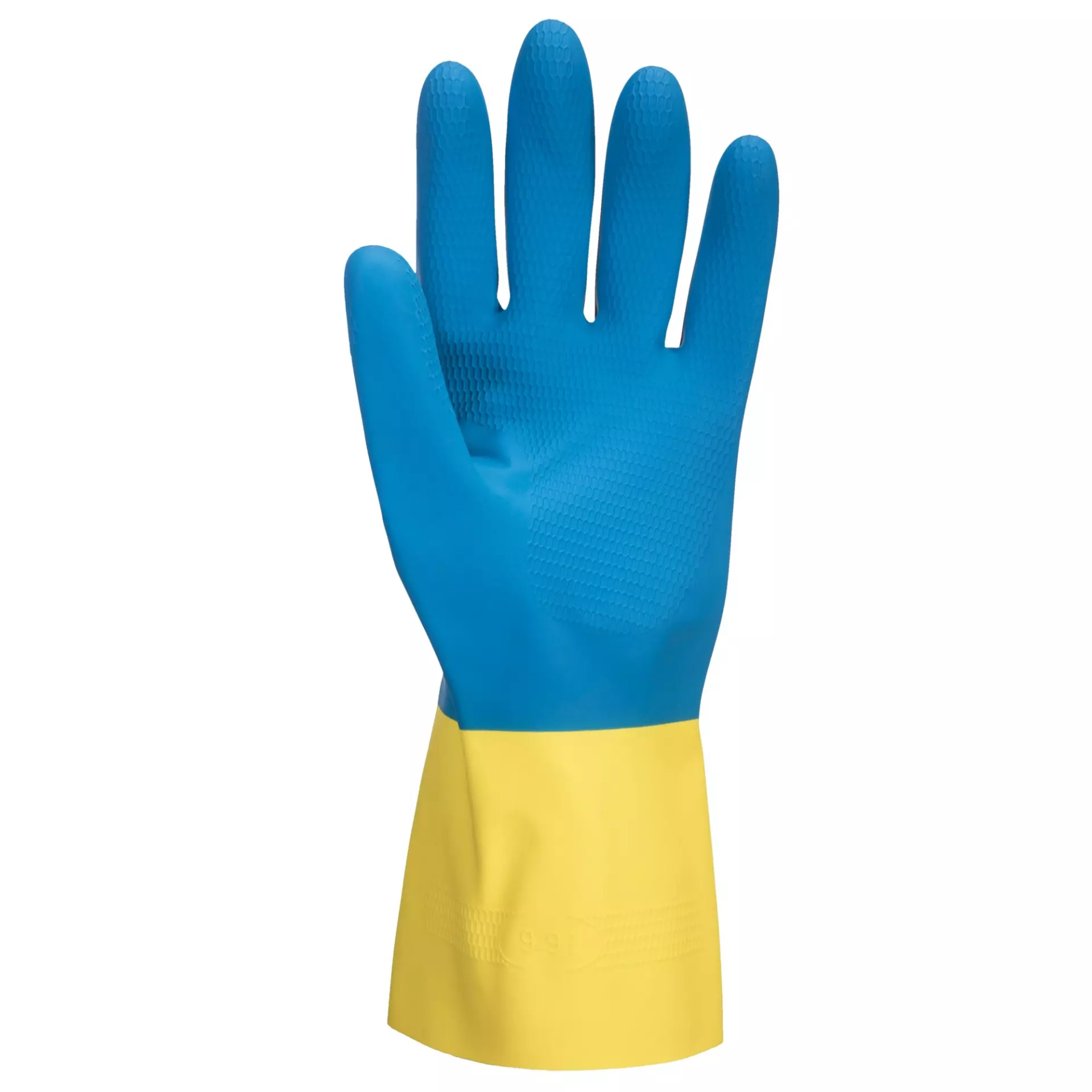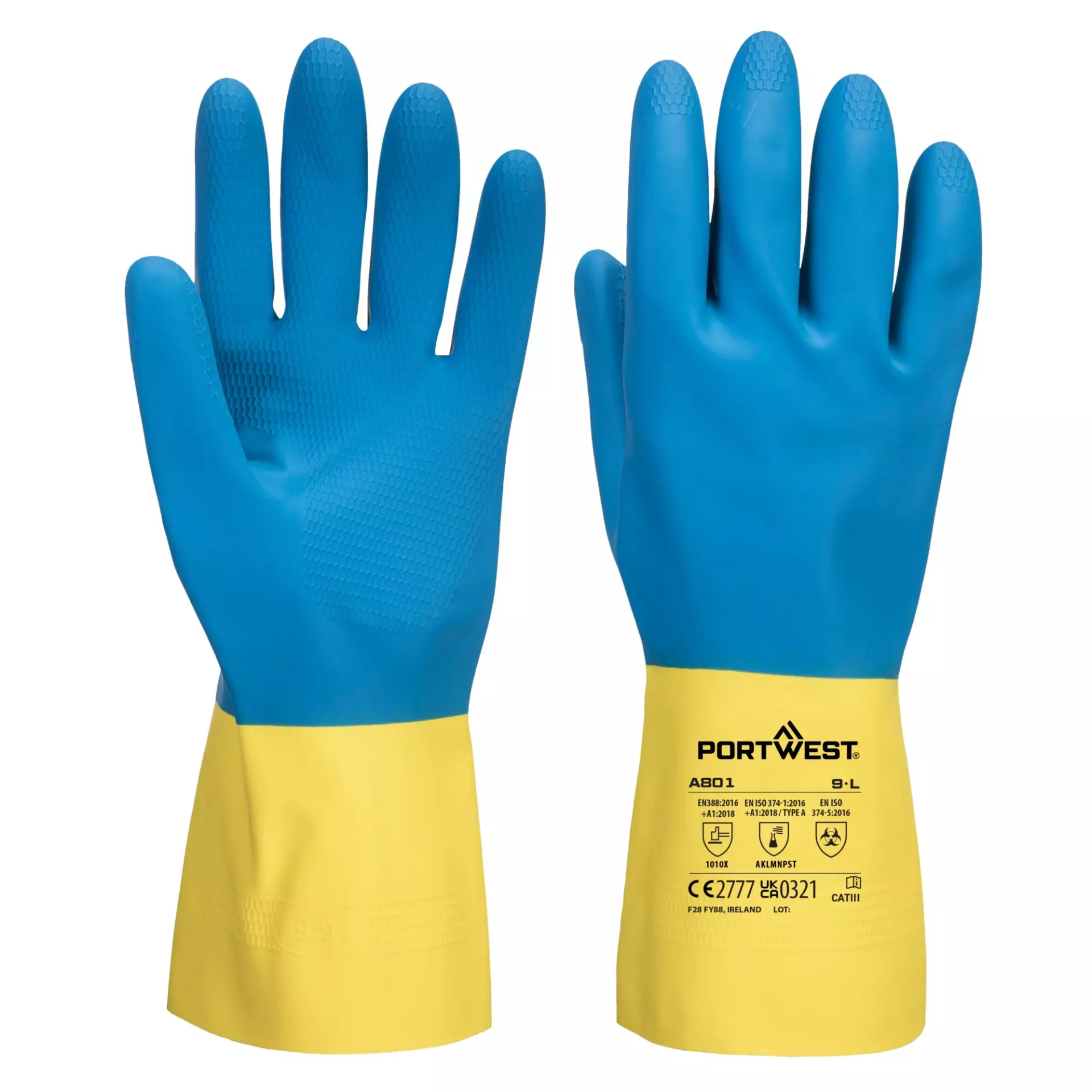


Features You'll Love

Coating Material · Latex
The material applied to glove surfaces to enhance grip, protection, and durability for specific work conditions and hazards.
Portwest
Double Dipped Latex Gauntlet, Yellow/Blue, 12 pairs
Double Dipped Latex Gauntlet, Yellow/Blue, 12 pairs
5 / 5
38,97 €
Price per 12 pairs
3,25 € / pair
Choose size
Shipping fee is 7,94 € for orders under 80,00 €
Features You'll Love

Coating Material · Latex
The material applied to glove surfaces to enhance grip, protection, and durability for specific work conditions and hazards.
Product description
This double-dipped latex gauntlet provides enhanced chemical protection with an anti-slip pattern for reliable grip in both wet and dry conditions. The dual latex coating and chlorination treatment ensure durability in demanding environments, while flock lining adds comfort during extended wear. Meeting multiple EN standards including Type A chemical resistance, this 300mm gauntlet is designed for chemical industry, food processing, and industrial cleaning applications.
Product Features:
- Double dipped latex construction with anti-slip pattern
- Dual latex coating for additional protection
- Flock lined for enhanced comfort
- Chlorinated for improved durability
- Chemical resistant gauntlet design
Technical Details:
- Thickness: 0.45mm
- Length: 300mm
- CE-CAT III certified
- Notified Body: 2777/10425-04/E06-01 SATRA Technology Europe Ltd
Recommended Applications:
- Chemical industry
- Food processing
- Industrial cleaning
Standards:
- EN ISO 21420:2020 Dexterity 5
- EN 388:2016 + A1:2018 (1010X)
- EN ISO 374-1:2016 + A1:2018 Type A (AKLMNOPST)
- EN ISO 374-5:2016 Micro Organisms